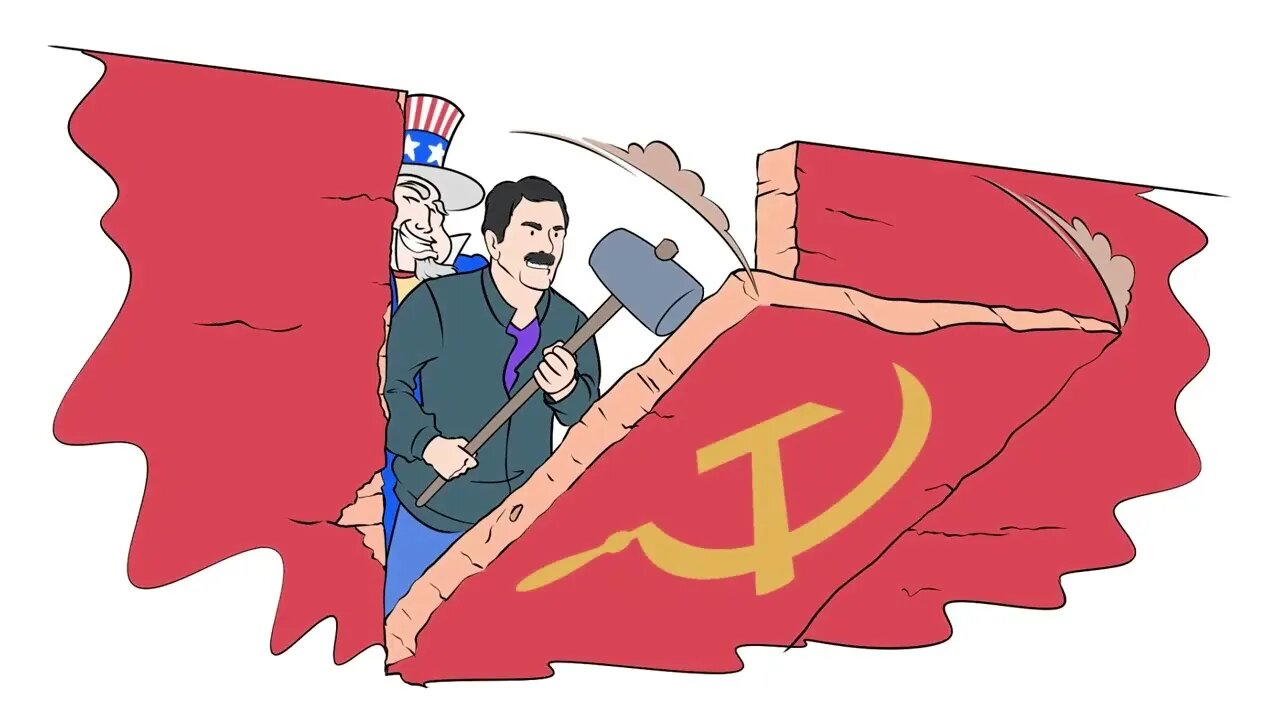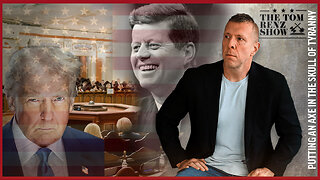Premium Only Content

Proxy Wars
In February 1946, George Kennan sent a telegram to the State Department that painted a foreboding picture of the Soviet Union. “We have here a political force,” Kennan wrote, “committed fanatically to the belief that it is necessary that the internal harmony of [American] society be disrupted, our traditional way of life be destroyed, [and] the international authority of our state be broken.”
A subsequent State Department report urged the federal government to “resist vigorously [Soviet] efforts to expand into areas vital to American security.” The report called on America to “assist all democratic countries endangered by the U.S.S.R.”
President Harry Truman implemented these recommendations in his containment policy, based on what become known as the domino theory. The theory posited, the fall of a single state to communism would precipitate the fall of surrounding countries like a row of dominoes. The US, therefore, needed to contain communism by supporting non-Communist governments economically and militarily.
The contest between the American and Soviet empires is called the Cold War because instead of fighting directly, the states waged proxy wars in other countries. The key battlegrounds were economically undeveloped regions, dubbed the “Third World”—the First World being Western democracies and the Second World being Communist dictatorships.
The American and Soviet governments supplied weapons to opposing sides in Third World conflicts, vying to install puppet governments. The Cold War seemed to usher in a new type of imperialism, but it actually resurrected the ancient formula of the Persian Empire, which installed pliant local governors, known as satraps, to provide the illusion of autonomy in conquered provinces.
The newly established CIA orchestrated regime changes in dozens of countries, often installing brutal dictators such as the Shah of Iran and Mobutu Sese Seko in Zaire. The strategy backfired constantly. American-backed dictators commonly faced coups and assassinations, and their oppressive policies seemed to confirm Soviet critiques of America, even though Soviet-backed dictators were no less brutal.
Instead of containing communism, proxy wars exacerbated Third World conflicts. Some even escalated enough to draw the American military into combat. For example, the US originally supplied weapons to the French military in Vietnam. After France was driven out, President John Kennedy sent equipment and troops to train the anti-communist forces in the south. Within a few years, American soldiers were fighting directly.
The Vietnam War spanned three presidential administrations, expanded into Laos and Cambodia, and resulted in the deaths of fifty-eight thousand Americans and millions of Southeast Asians. It was also America’s first military defeat, as Communists took power in all three countries. Yet to the surprise of foreign policy experts, no other dominoes toppled.
The Cold War ended in 1991, securing America’s global hegemony. Proxy warfare continued, but with Russia’s “evil empire” defeated, America lacked a unifying enemy. This changed in 2001, when George W. Bush declared war against terror.
-
 1:06:19
1:06:19
Mises Institute
18 days agoPerfecting the Libertarian Argument for Dealing with the Drug Cartels
1901 -
 6:00
6:00
Melonie Mac
16 hours agoRippaverse Yaira Statue Unboxing!
34.5K29 -
 23:51
23:51
Shea Whitney
1 day ago $3.23 earned30 *INSANE* Amazon SPRING PRIME DAY Deals 2025!
29.3K7 -
 11:36
11:36
NinjaGamblers
22 hours ago $2.38 earnedBest Way to Win Big on Roulette with Bonus Multipliers: the Turbo Method
37.2K3 -
 12:42
12:42
ARFCOM Reviews
19 hours ago $1.18 earnedThe Texas Edition Subcompact EDC | Rost Martin RM1S
29.2K3 -
 33:23
33:23
Uncommon Sense In Current Times
19 hours ago $1.78 earned“Woke” Workplaces are Killing America | Andrew Crapuchettes
30.8K3 -
 1:03:21
1:03:21
PMG
1 day ago $2.50 earnedThe JFK Files, Crooked Judges, & Trump's Performance So Far With Jovan Pulitzer
25.1K8 -
 2:45:10
2:45:10
Laura Loomer
13 hours agoEP111: Republicans Refuse To Crack Down On Democrat Violence
198K283 -
 2:43:55
2:43:55
TimcastIRL
14 hours agoTrump Signs Order Requiring Citizenship PROOF To Vote, Democrats Will NEVER Win AGAIN | Timcast IRL
295K220 -
 4:11:17
4:11:17
Geeks + Gamers
17 hours agoTuesday Night's Main Event
150K8